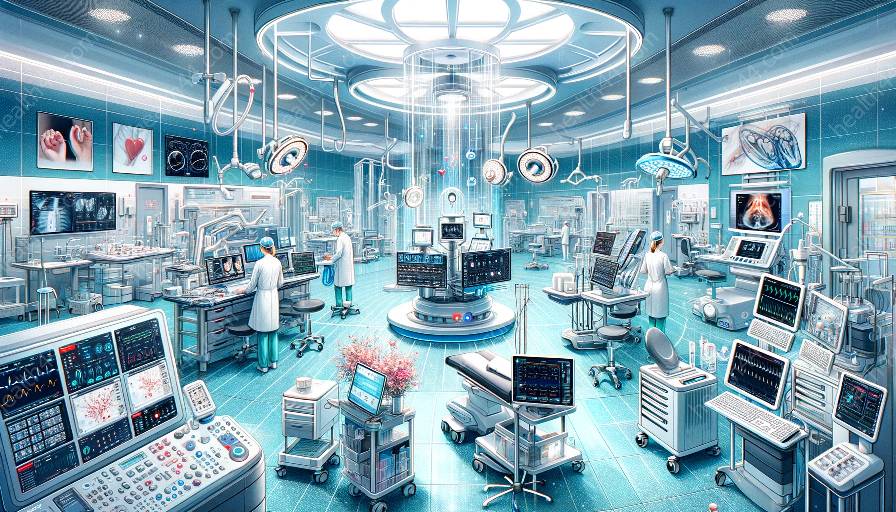The respiratory system plays a critical role in the exchange of oxygen and carbon dioxide, which is essential for maintaining the body's survival. This article provides a comprehensive understanding of the mechanisms of gas exchange, while also delving into its anatomical and physiological implications, as well as its relevance to medical devices.
Anatomy and Function of the Respiratory System
The respiratory system consists of the airways, lungs, and respiratory muscles that facilitate the exchange of gases between the environment and the body's internal environment. The primary structures involved in gas exchange are the alveoli, tiny air sacs within the lungs where the exchange of oxygen and carbon dioxide occurs.
Inhalation and exhalation are the two main processes involved in the exchange of gases. During inhalation, the diaphragm contracts and moves downward, while the intercostal muscles expand the rib cage, increasing the volume of the chest cavity. This expansion reduces the air pressure within the lungs, causing air to flow in from the environment. Conversely, during exhalation, the diaphragm relaxes and moves upward, while the intercostal muscles relax, decreasing the volume of the chest cavity, leading to the expulsion of air from the lungs.
Gas exchange occurs in the alveoli, where the exchange surface is enhanced by a large surface area and a thin respiratory membrane. The alveoli are surrounded by an extensive network of capillaries, allowing for the efficient exchange of gases between the air and the blood. Oxygen from the inhaled air diffuses across the respiratory membrane and into the bloodstream, while carbon dioxide from the blood diffuses in the opposite direction, entering the alveoli to be exhaled from the body.
Physiological Aspects of Gas Exchange
The process of gas exchange is driven by a concentration gradient, where oxygen moves from areas of high concentration (in the alveoli) to low concentration (in the bloodstream), and carbon dioxide moves from high concentration (in the bloodstream) to low concentration (in the alveoli).
Oxygen is primarily transported in the blood by binding to hemoglobin, a protein found in red blood cells. This binding forms oxyhemoglobin, which is then carried to various tissues throughout the body. At the tissues, the oxygen dissociates from hemoglobin and diffuses into the cells, where it is used in cellular respiration to produce energy.
Carbon dioxide, on the other hand, is transported in three main forms: dissolved in the plasma, combined with hemoglobin to form carbaminohemoglobin, and as bicarbonate ions. The majority of carbon dioxide is transported in the form of bicarbonate ions, which is facilitated by the enzyme carbonic anhydrase within the red blood cells. This bicarbonate ion formation helps maintain the blood's pH and allows for the efficient transport of carbon dioxide to the lungs for elimination.
Relevance to Medical Devices
Understanding the mechanisms of gas exchange in the respiratory system is crucial in the development and application of medical devices that support or enhance respiratory function. One key area where this understanding is applied is in the design and function of mechanical ventilators, which are essential in providing artificial ventilation for patients who are unable to breathe adequately on their own.
Mechanical ventilators assist with gas exchange by delivering oxygen to the alveoli and removing carbon dioxide from the lungs. They are equipped with sensors and controls that monitor and adjust the delivery of oxygen and the removal of carbon dioxide based on the patient's respiratory parameters and gas exchange needs.
Furthermore, medical devices such as oxygen concentrators and nebulizers also play a vital role in supporting gas exchange by delivering supplemental oxygen and medications to patients with respiratory conditions. These devices are designed to enhance the efficiency of gas exchange and improve respiratory function in individuals with compromised lung health.
In conclusion, a comprehensive understanding of the mechanisms of gas exchange in the respiratory system is fundamental to appreciating the intricacies of anatomy and physiology, and their relation to medical devices. This knowledge not only underpins the functioning of the respiratory system but also contributes to the development of innovative medical devices that play a critical role in supporting respiratory health and enhancing gas exchange processes.


